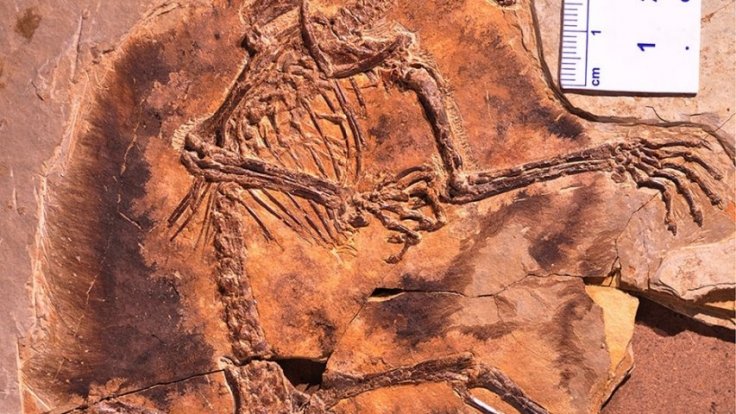
NASA's Goddard Space Flight Center in Maryland, US has much more to do than hosting space missions to explore life outside Earth. It is also tracking the early history of Earth's life, beginning from 100 million years ago.
A sandstone slab excavated from the Goddard Space Flight Center in 2012 holds footprints of at least 70 mammal and dinosaurs. According to a paper published on January 31 in the journal Scientific Reports, the sandstone footprints might be at least 100 million years old and hold the clue that mammals and dinosaurs were indeed interacting.
Ray Stanford, a local dinosaur track expert had accidentally discovered the dinosaur track in the dining room table-sized rock in 2012 while returning after dropping his wife, Sheila at her office in Goddard center. He found the 12-inch-wide dinosaur track in the exposed rock behind Sheila's office. The follow-up excavation and studies have identified more preserved tracks from the dinosaur era.
The 8 feet by 3 feet specimen had imprints from eight species, including squirrel-sized mammals and tank-sized dinosaurs. Experts suggest that the tracks might have formed within few days in the edge of a wetland region. It could even belong to a predator and its prey.
Martin Lockley, a palaeontologist with the University of Colorado, Denver and a co-author of the paper, said, "The concentration of mammal tracks on this site is orders of magnitude higher than any other site in the world. I don't think I've even seen a slab this size, which is a couple of square meters, where you have over 70 footprints of so many different types. This is the mother lode of Cretaceous mammal tracks."
Stephen J. Godfrey, curator of palaeontology at the Calvert Marine Museum, coordinated the excavation of the slab and creation of the mould and cast for the scientific study.
The tracks of a tank-sized nodosaur and baby nodosaur found near and within the adult's footprint indicate that they were walking together. Other dinosaurs like long-necked plant eater sauropod, small, crow-sized carnivorous dinosaur theropods, and flying reptile pterosaurs had punched their imprints in the fossil rock.
The region is believed to be one of the two sites in the world found with the largest concentration of prints. The slab stores the largest mammal track ever discovered from the Cretaceous period which is of about four square inch size. At least 26 mammal footprints were discovered in the stone since 2012.
Stanford said, "It's a time machine. We can look across a few days of activity of these animals and we can picture it. We see the interaction of how they pass in relation to each other. This enables us to look deeply into ancient times on Earth. It's just tremendously exciting."
Wider diversity and number of tracks indicate that these animals fed from the region at the same time. Mammals which fed on worms and grubs might have been eaten by small carnivorous dinosaurs. Pterosaurs, the larger carnivore dinosaur, could have actively hunted on the mammals and small dinosaurs. The parallel footprint patterns of four crow-sized carnivores give hints of a hunting group.
The researchers also identified mammal tracks in pairs which indicate that they stopped to sit on their haunches. This sitting pattern from Goddard Space Flight Center has been named as "Sederipes goddardensis".
Scientists believe that Maryland supported large varieties of life during the Cretaceous era due to its hotter, swampier topography. The scientists continue with their study to compare the tracks with others found around the globe for more discoveries on prehistoric life.









